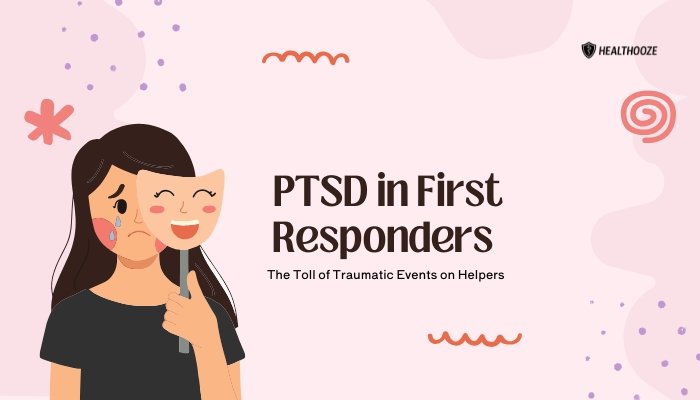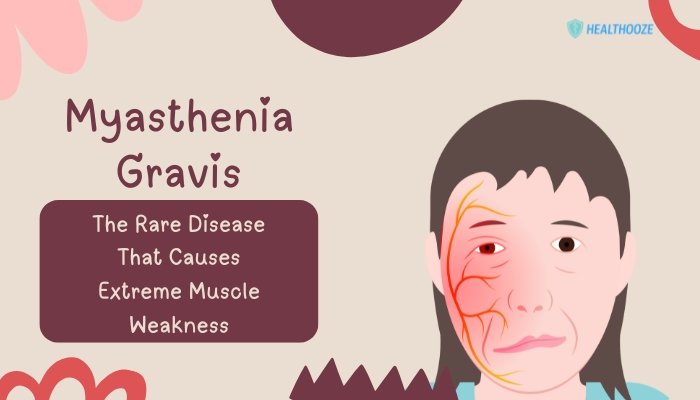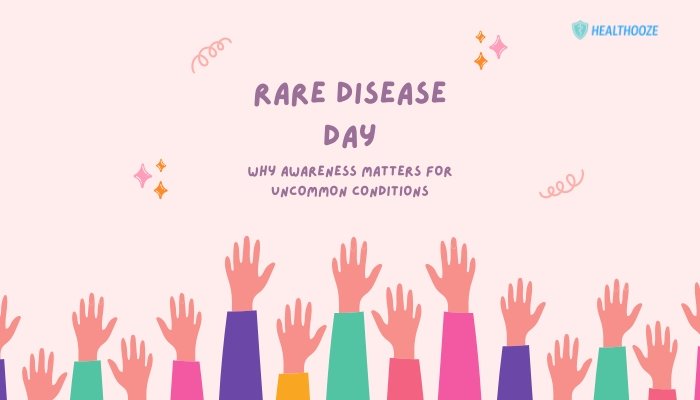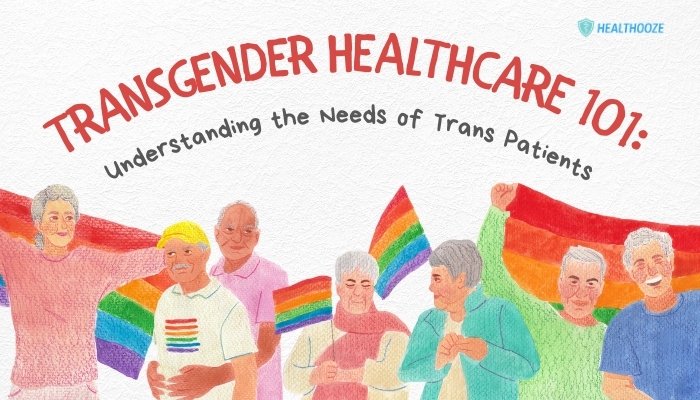Introduction
First responders—such as police officers, firefighters, paramedics, and emergency dispatchers—regularly confront life-threatening crises, mass-casualty incidents, and human suffering. Their duties require swift decision-making under pressure and, in many cases, direct exposure to shocking scenes.
While they work to protect the public, these experiences can gradually accumulate psychological scars. Over time, repeated or severe exposures to trauma may lead to post-traumatic stress disorder (PTSD), an anxiety disorder characterized by persistent fear, hypervigilance, nightmares, flashbacks, and avoidance behaviors.
The emergence of PTSD in first responders not only impairs their quality of life but can reduce job performance and strain relationships with coworkers, friends, and family. Yet the culture surrounding emergency services sometimes discourages open discussions of mental health, creating an environment where individuals hide or minimize their struggles.
This article explores how and why PTSD develops among first responders, the signs to recognize, and evidence-based strategies for prevention, intervention, and rehabilitation. By raising awareness and promoting supportive workplace practices, agencies can foster resilience and help these everyday heroes maintain strong mental well-being.
Understanding PTSD
Post-traumatic stress disorder arises when a person fails to process, integrate, or recover from a terrifying or potentially life-threatening event. Not everyone exposed to trauma develops PTSD. A host of factors—such as genetic predisposition, social supports, and the nature of the incident—can influence whether an individual recovers, experiences mild stress symptoms, or develops more serious mental health disorders. In the case of first responders, trauma may not stem from a single catastrophic event but rather from multiple smaller or moderate stressors over years of service.
Core Diagnostic Criteria
Mental health professionals typically use guidelines from the Diagnostic and Statistical Manual of Mental Disorders (DSM) or the International Classification of Diseases (ICD) to identify PTSD. The DSM-5 outlines four main clusters of symptoms:
- Intrusive Symptoms
- Nightmares, flashbacks, intrusive memories
- Intense emotional or physical reactions upon reminders of the event
- Avoidance
- Steering clear of places, conversations, or activities that evoke memories
- Withdrawing from discussion about the incident
- Negative Changes in Thought and Mood
- Persistent negative beliefs about oneself or the world
- Distorted blame, persistent fear, guilt, or shame
- Diminished interest in activities once enjoyed
- Alterations in Arousal and Reactivity
- Hypervigilance, easily startled
- Irritability, angry outbursts
- Concentration difficulties, sleep problems
For a PTSD diagnosis, symptoms must persist for at least one month and cause significant impairment in daily functioning. Where first responders are concerned, symptoms may appear abruptly after an extreme event (e.g., mass-casualty incident) or arise cumulatively from years of repeated high-pressure duties, eventually surpassing the threshold for a clinical condition.
Why First Responders Face Elevated PTSD Risk
First responders’ roles place them on society’s front lines of danger and tragedy. While many adapt over time, certain characteristics of their work environment, repeated exposures, and organizational cultures increase the likelihood of PTSD development.
Repeated Exposure to Trauma
- High Frequency of Critical Incidents: Police may witness violent crimes or fatalities daily. Firefighters often respond to deadly accidents, severe burns, and mass emergencies. Paramedics deal with grievous injuries and life-or-death interventions. Frequent contact with intense suffering amplifies stress.
- Unpredictable Calls: At any moment, a dispatch can direct first responders to a catastrophic crash, child abuse scene, or active shooter situation, provoking anxiety even when not on an active call.
- Vicarious Trauma: Repeatedly hearing survivors’ accounts, seeing the aftermath of violence, or absorbing community grief can produce secondary traumatic stress, which may lead to PTSD-like symptoms.
High Stakes and Personal Risk
- Life-Threatening Duties: Entering burning buildings, confronting armed suspects, or performing roadside rescues place first responders themselves at risk. This personal vulnerability intensifies stress levels and heightens the emotional imprint of each event.
- Responsibility for Lives: Firefighters, medics, and law enforcement bear the burden of saving others. Failing to prevent a fatality—through no fault of their own—can trigger guilt and intrusive self-criticism.
Occupational Culture and Stigma
- “Toughness” Norms: Emergency services historically value stoicism, leading many to mask distress or mental health challenges out of fear of being perceived as weak.
- Minimal Debrief or Emotional Processing: Some departments lack formal support to discuss critical incidents, limiting chances to diffuse tension or detect early psychological harm.
- Shift Work and Poor Sleep: Irregular, extended shifts erode resilience. Chronic sleep disruption diminishes coping ability and emotional regulation.
Organizational Factors
- Bureaucratic Stress: Funding shortfalls, understaffing, or policy constraints add administrative burdens. Overworked responders have less time to decompress or address personal issues.
- Lack of Mental Health Resources: Even if a first responder wants help, limited departmental programs or inaccessible therapy can delay effective care.
Early Warning Signs and Symptom Patterns
PTSD can manifest subtly or escalate after an acute trauma. Recognizing early signs in oneself or colleagues fosters quicker intervention and better outcomes.
Behavioral Changes
- Social Withdrawal: Avoiding squad members or loved ones outside work, increased irritability in group settings.
- Risk-Taking or Substance Use: Some self-medicate with alcohol or drugs to numb intrusive memories or anxious feelings.
- Excessive Overcommitment: Conversely, overworking or volunteering for extra duties can be an attempt to distract from disturbing memories.
Emotional Dysregulation
- Sudden Mood Swings: Anger, fear, or sadness triggered by minor stressors.
- Hypervigilance: Constant scanning of the environment for threats, jumpiness at unexpected sounds.
- Numbed Emotions: Feeling detached or indifferent, as if events hold no emotional impact.
Physical Symptoms
- Poor Sleep Quality: Trouble falling asleep, nightmares, frequent awakenings, or waking unrefreshed.
- Unexplained Fatigue or Headaches: Chronic stress can manifest physically, leading to bodily aches.
- Cardiovascular Strain: Elevated heart rate, palpitations, or panic-like episodes.
Professional Consequences
- Decline in Performance: Slower reaction times, errors in judgment, or reduced motivation can jeopardize safety on the job.
- Strained Team Dynamics: Tension with colleagues who notice personality shifts or unpredictable emotional responses.
- Increased Sick Leave: Frequent absenteeism or requests for desk work instead of field duties.
Barriers to Seeking Help
Although mental health awareness grows, many first responders remain hesitant to disclose distress or undergo treatment. Identifying and addressing these barriers is crucial to fostering a healthier emergency services workforce.
Cultural Norms
- Myth of Invulnerability: “If I admit vulnerability, I can’t handle the job.” This mindset compels individuals to “push through,” exacerbating PTSD risk.
- Fear of Career Impact: Concern over losing promotional opportunities, specialized assignments, or firearms privileges (for law enforcement) can discourage reaching out.
Organizational Gaps
- Limited Confidentiality: In smaller departments, a mental health referral might be easily noticed, raising gossip or stigma among peers.
- Sparse Funding: Budget constraints hamper robust employee assistance programs (EAPs) or limit the scope of psychoeducation.
- Lack of Specialized Providers: General therapists without first responder experience may struggle to address job-specific traumas, leaving clients feeling misunderstood.
Personal Misconceptions
- “I Should Cope Alone”: Some believe that mental toughness precludes the need for therapy, concluding that any help signals personal failure.
- “If I Ignore It, It Will Disappear”: Denial can give short-term relief but amplifies long-term harm, as trauma accumulates or worsens unaddressed.
Effective Interventions and Support Systems
While PTSD can be debilitating, many evidence-based treatments and organizational measures can significantly enhance recovery and resilience among first responders. Early and consistent interventions remain key.
Psychotherapeutic Approaches
- Cognitive Behavioral Therapy (CBT)
- Targets unhelpful thought patterns, fosters healthy coping mechanisms.
- Can reduce negative self-blame and reinforce safer emotional processing.
- Prolonged Exposure (PE) Therapy
- Gradual exposure to trauma memories or reminders in a controlled setting.
- Diminishes fear responses, helps integrate the traumatic experiences.
- Eye Movement Desensitization and Reprocessing (EMDR)
- A specialized technique combining guided eye movements with recalled trauma events.
- Aims to desensitize emotional intensity and reshape negative beliefs.
- Trauma-Focused Group Therapy
- Facilitates peer support, normalizes experiences among colleagues, fosters mutual encouragement.
Pharmacological Options
- SSRIs and SNRIs: Antidepressants addressing anxiety, depression, or intrusive thoughts.
- Prazosin: Sometimes used to reduce nightmares or hyperarousal symptoms.
- Benzodiazepines: Generally discouraged for long-term PTSD management due to dependency risks and sedation.
Peer Support and Debriefing Programs
- Critical Incident Stress Debriefing (CISD): A structured discussion soon after a critical call or mass-casualty event to share emotional reactions, validate stress, and direct individuals to further care if necessary.
- Peer Mentorship: Senior officers or medics trained in mental health first aid can recognize early warning signs in colleagues and promote mental well-being.
- Chaplains or Employee Assistance: Provide confidential spaces for spiritual or emotional counsel, bridging formal therapy gaps.
Organizational Culture Shifts
- Leadership Endorsement: Supervisors who openly acknowledge mental health struggles and model healthy coping set the tone for an inclusive department.
- Normalization of Help-Seeking: Routine mental health check-ins, discussion of stress impacts, and inclusion of psychological health in performance metrics reduce stigma.
- Wellness Initiatives: Fitness programs, nutritional guidance, structured time off, and family support sessions help maintain holistic well-being.
Prevention and Resilience-Building
Instead of waiting for PTSD to manifest, first responder agencies can proactively equip staff with emotional coping strategies and supportive environments.
Training and Education
- Pre-Employment Screening: Identify candidates at higher risk or with existing vulnerabilities. Provide extra resources or mentorship early on.
- Ongoing Workshops: Offer classes on stress management, mindful breathing, or trauma awareness as part of continuing education.
- Skills for Emotional Regulation: Simple techniques—like grounding exercises or progressive muscle relaxation—foster day-to-day resilience.
Critical Incident Protocols
- Formal Debriefing: Implement debrief processes after each major incident to share experiences, defuse emotional distress, and direct staff to any needed follow-ups.
- Rotational or Mandatory Downtime: For large-scale disasters, ensure shifts are limited and staff are relieved to rest or receive counseling.
- Buddy System: Partners or small teams keep track of each other’s mental states, offering immediate check-ins.
Wellness Culture
- Physical Fitness: Regular exercise improves mood, reduces stress, and can mitigate the physiological load of shift work.
- Healthy Diet and Sleep Routines: Encouraging balanced meals and consistent rest fosters overall resilience.
- Mindfulness and Peer Engagement: Simple mental resets or group-based reflection sessions to manage daily micro-stresses can avert cumulative burnout.
Addressing Post-Traumatic Growth
Although PTSD highlights the distressing aftermath of repeated trauma, some first responders also experience elements of post-traumatic growth (PTG)—positive personal changes arising from adversity.
Components of PTG
- Enhanced Appreciation of Life: Gaining a renewed sense of purpose or gratitude.
- Strengthened Relationships: Closer bonds with peers who share unique experiences and empathize with the emotional toll.
- Changed Life Priorities: Choosing to spend more time with family, focusing on personal development, or supporting others in crisis.
Facilitating Growth
- Supportive Communities: Acknowledging not just the negative but also the resilience or wisdom gleaned from adversity helps reframe experiences.
- Professional Mentorship: Senior responders who overcame trauma can guide younger peers, turning painful lessons into leadership.
- Personal Reflection: Therapy and journaling can help individuals reinterpret challenging calls as impetus for personal evolution rather than purely destructive events.
While not everyone experiences PTG, fostering an environment that recognizes potential for positive transformation can mitigate despair and inspire hope.
The Role of Family and Social Connections
Family members and close friends often serve as an essential support system for first responders living with PTSD. Yet, the demands of shift work and the emotional distance caused by stress can strain relationships. Clear communication, empathy, and mutual understanding help navigate these challenges.
Recognizing Family Impact
- Secondary Stress: Loved ones might feel the ripple effects of the responder’s hypervigilance or irritability.
- Caregiver Burnout: Spouses or parents who try to “fix” emotional issues can become overwhelmed themselves.
- Children’s Emotional Security: Kids might sense tension or withdraw if the responder parent exhibits unpredictable moods.
Strengthening Family Bonds
- Open Dialogue: Normalizing discussions about tough calls or emotional ups and downs fosters trust.
- Involvement in Counseling: Some families benefit from couples or family therapy to enhance coping, conflict resolution, and emotional closeness.
- Respite Opportunities: Mini-vacations or structured time off from the high-pressure environment can rejuvenate the responder’s mental well-being and their relationships.
A Call to Action for Departments and Policy
Tackling PTSD in first responders requires a systemic approach that promotes mental health, invests in supportive resources, and counters stigma. While individual coping is vital, the burden of change should not rest solely on the shoulders of those at risk.
Departmental Initiatives
- Comprehensive Mental Health Policies
- Clearly outline procedures for crisis intervention, screening, confidentiality, and employee rights.
- Ensure these protocols are well-communicated and easy to access.
- Regular Wellness Checks
- Yearly or bi-annual mental health check-ins for first responders, similar to physical health assessments.
- Early detection of stress build-up or mild symptoms can prevent progression to severe PTSD.
- Mandatory Decompression Periods
- Scheduling guaranteed days off post-critical incidents.
- Encouraging usage of mental health leave without penalty.
Government and Legislative Support
- Funding for Research and Therapy: Additional grants to study PTSD interventions tailored to emergency service roles.
- Insurance Reforms: Coverage for mental health care, therapy sessions, or rehabilitation programs should be as robust as coverage for physical injuries.
- Retirement and Pension Considerations: Policies acknowledging that cumulative trauma may shorten effective service time. Programs assisting early retirement or career transition are beneficial.
Collaboration with Professional Associations
- Guidelines and Best Practices: Joint efforts among firefighter unions, police associations, paramedic boards, and mental health experts can standardize trauma-informed protocols.
- Conferences and Training: Annual symposiums on PTSD prevention and resilience building, exchanging lessons learned, and new scientific findings.
Conclusion
Post-traumatic stress disorder in first responders underscores the profound emotional toll these professionals shoulder in safeguarding communities. From police officers confronting violence to firefighters braving deadly infernos, no day is guaranteed free from psychologically impactful events. While resilience is common, some individuals inevitably develop persistent symptoms that impair work effectiveness, relationships, and personal well-being.
By dispelling the myths surrounding PTSD, fostering supportive departmental cultures, and strengthening access to evidence-based interventions, societies can better protect those who protect them. Efforts must focus on practical prevention measures, timely intervention, and continuous mental health monitoring to ensure that those who face danger every day do not have to suffer silently. Success in addressing first responder PTSD will hinge on collaboration—between policymakers, departmental leadership, mental health professionals, and the responders themselves. Only through this unified effort can we ensure that those who serve are supported and empowered, rather than being left to struggle alone after dealing with humanity’s darkest moments
References
- American Psychiatric Association. Diagnostic and Statistical Manual of Mental Disorders, 5th Edition (DSM-5). Washington, DC: American Psychiatric Publishing; 2013.
- Carleton RN, Afifi TO, Taillieu T, et al. Exposures to potentially traumatic events among public safety personnel in Canada. Can J Behav Sci. 2019;51(1):37–52.
- Haugen PT, Evces MR, Weiss DS. Treating posttraumatic stress disorder in first responders: a systematic review. Clin Psychol Rev. 2012;32(5):370–380.
- McFarlane AC. Risks associated with the professional culture of emergency services. Aust N Z J Psychiatry. 2012;46(12):1112–1120.
- Berger W, Coutinho ES, Figueira I, et al. Rescuers at risk: a systematic review and meta-regression analysis of the worldwide current prevalence and correlates of PTSD in rescue workers. Soc Psychiatry Psychiatr Epidemiol. 2012;47(6):1001–1011.
- Regehr C, LeBlanc VR. PTSD, acute stress, performance and decision-making in emergency service workers. J Am Acad Psychiatry Law. 2017;45(2):184–192.
- Creamer TL, Liddle BJ. Secondary traumatic stress among disaster mental health workers responding to the September 11 attacks. J Trauma Stress. 2005;18(1):89–96.
- Ramey SL, Perkhounkova Y, Hein M, et al. Evaluation of a stress management program to reduce stress and cortisol levels in first responders. Int J Emerg Ment Health. 2017;19(1):4–15.
- Halpern J, Maunder RG, Schwartz B, et al. Identifying risk factors for acute stress in paramedics. Psychol Trauma. 2012;4(3):290–296.
- Joyce S, Shand F, Bryant RA, et al. Mental health interventions for first responders: a review of published research. Psychol Med. 2019;49(9):1346–1357.
- Creamer M, Burgess P, McFarlane AC. Post-traumatic stress disorder: findings from the Australian National Survey of Mental Health and Well-being. Psychol Med. 2001;31(7):1237–1247.
- van der Velden PG, Kleber RJ, Koenen KC, et al. A review of trauma-focused cognitive behavioral therapy for first responders. Behav Ther. 2018;49(4):547–564.







